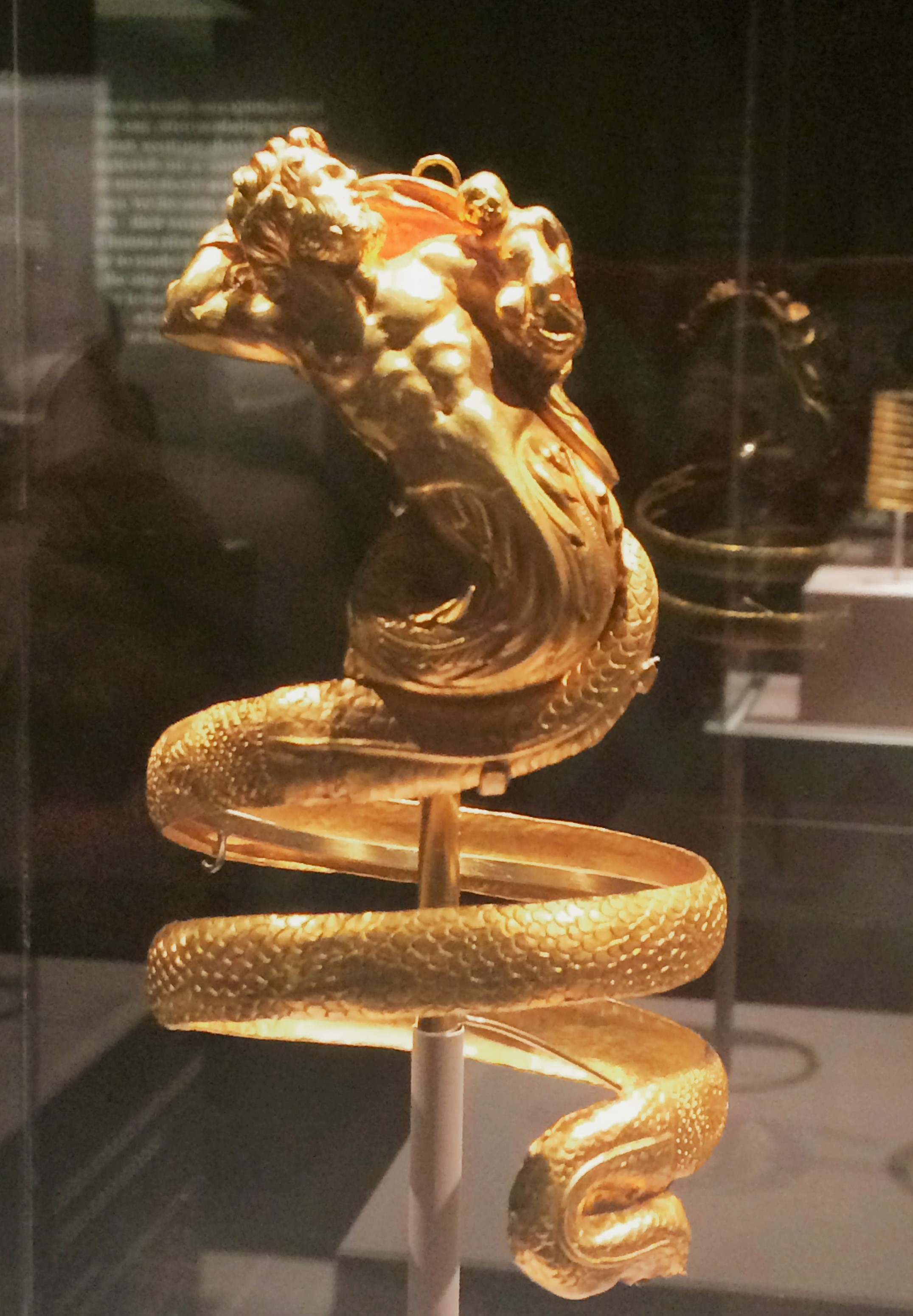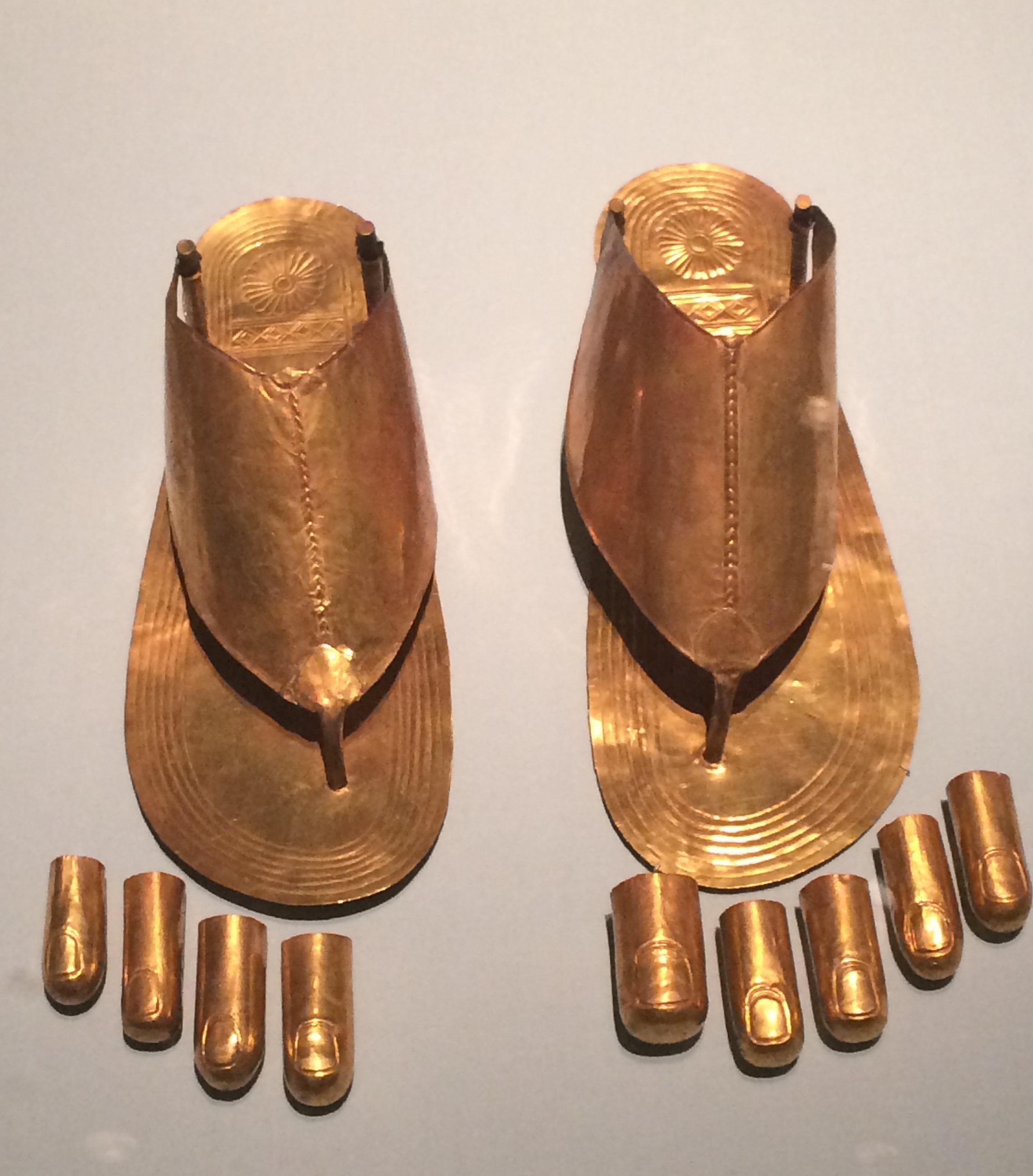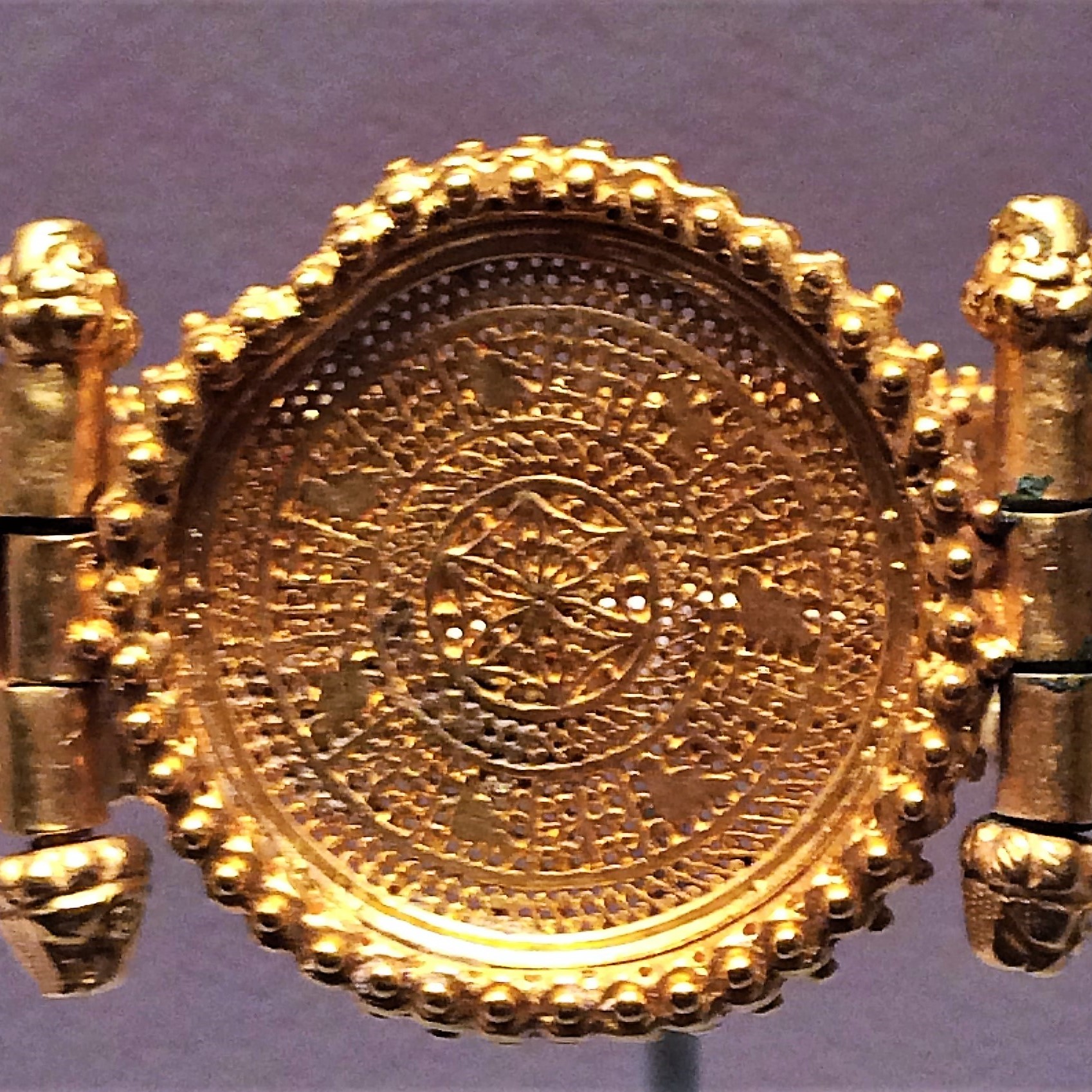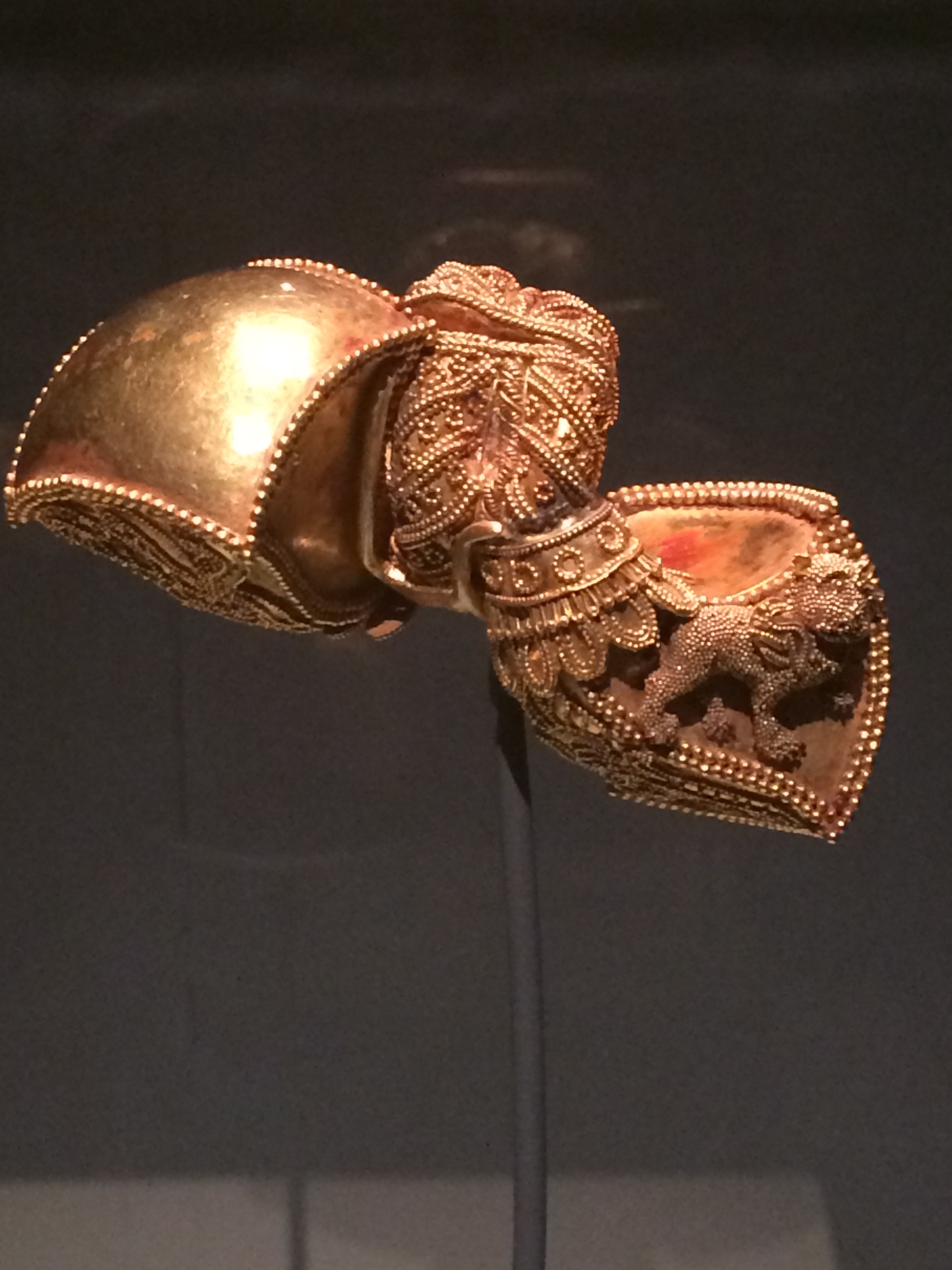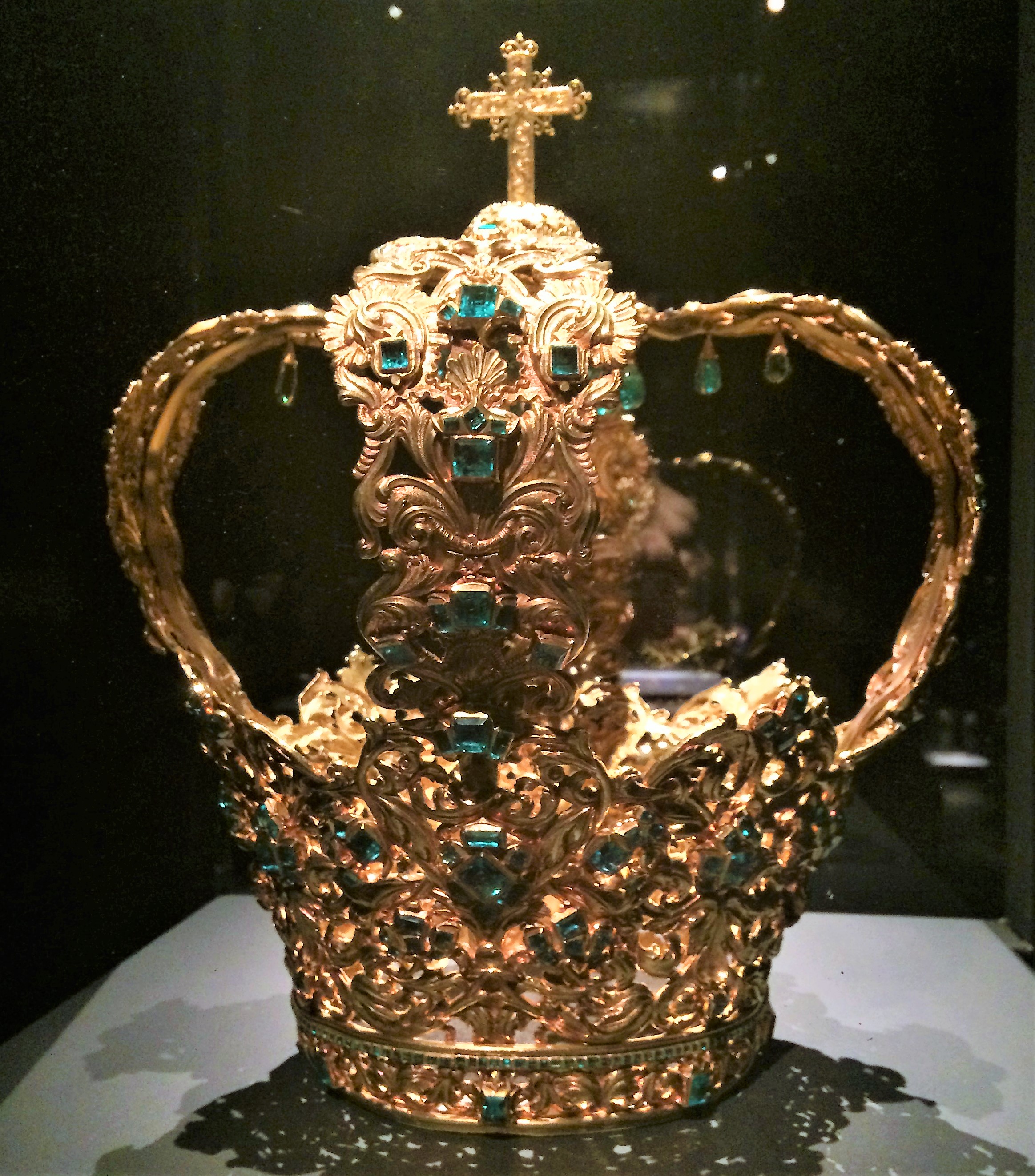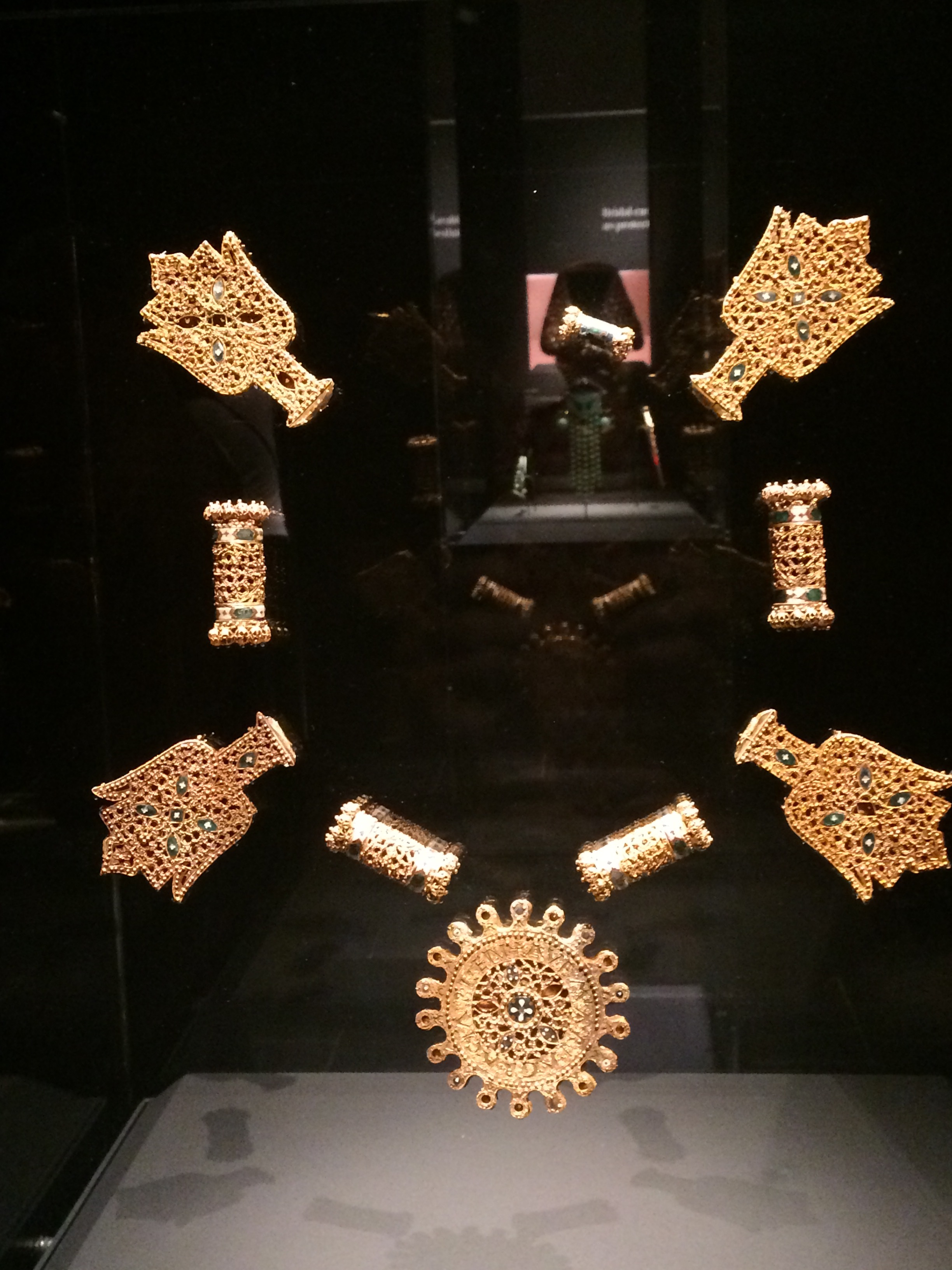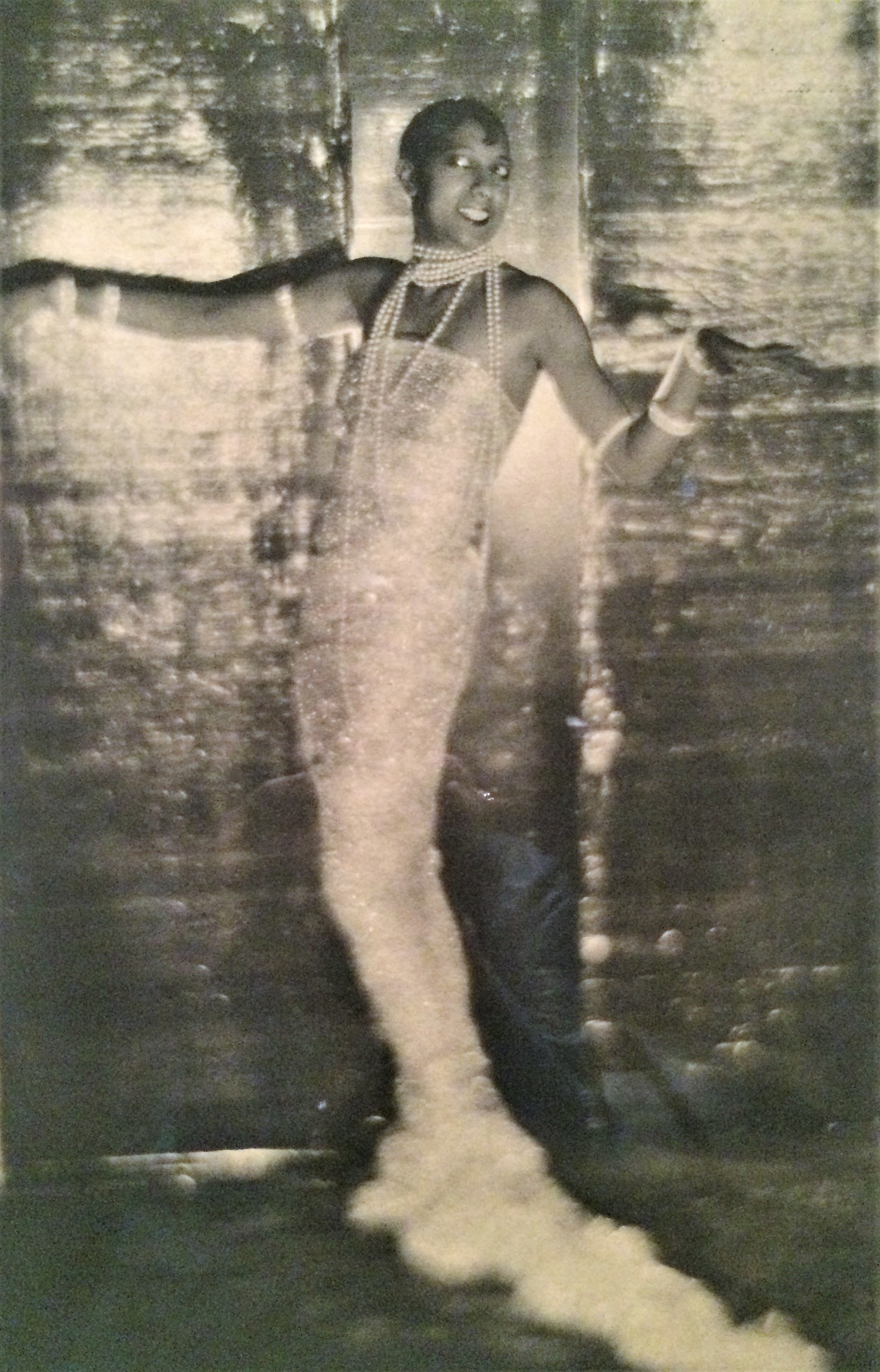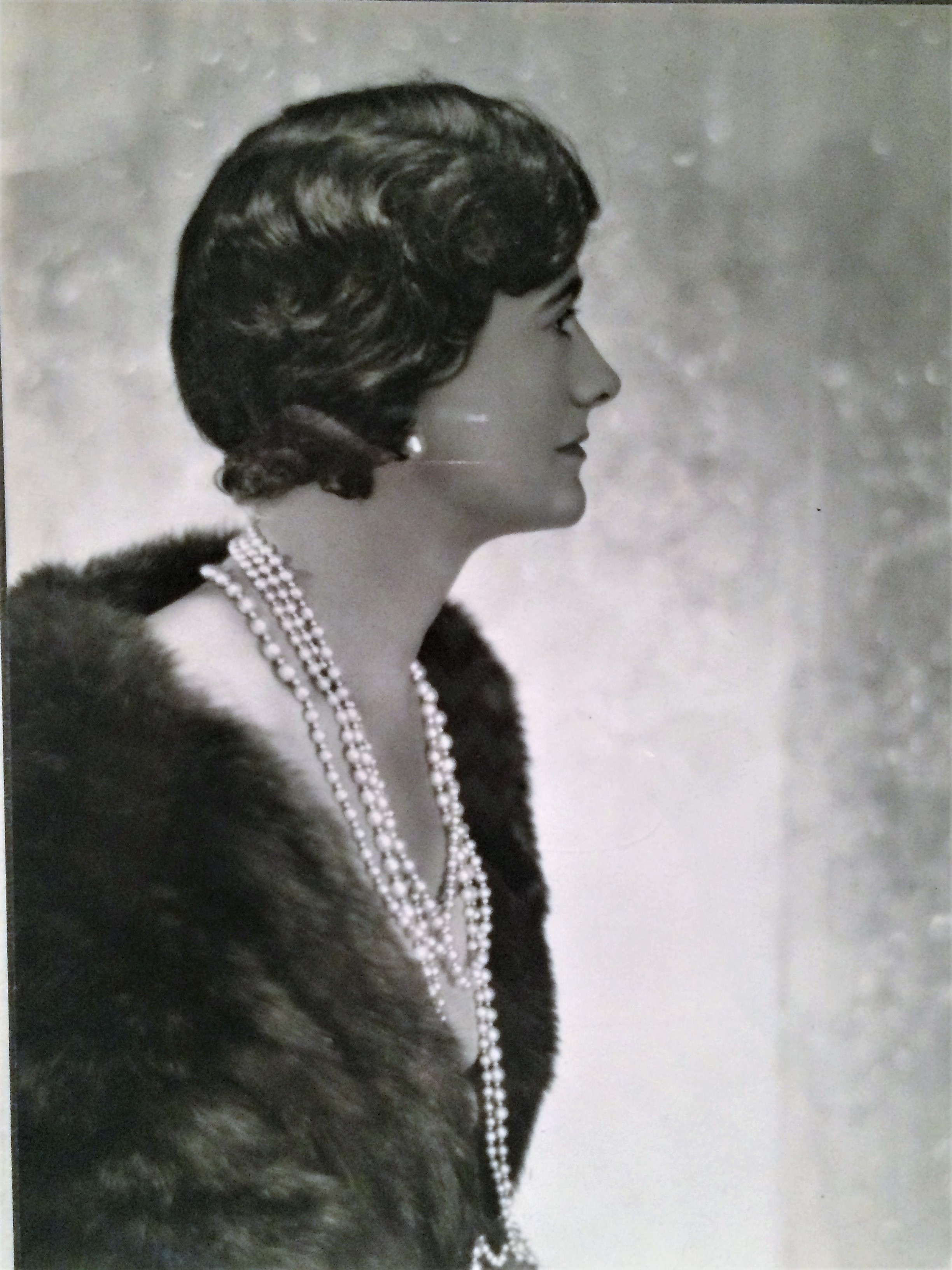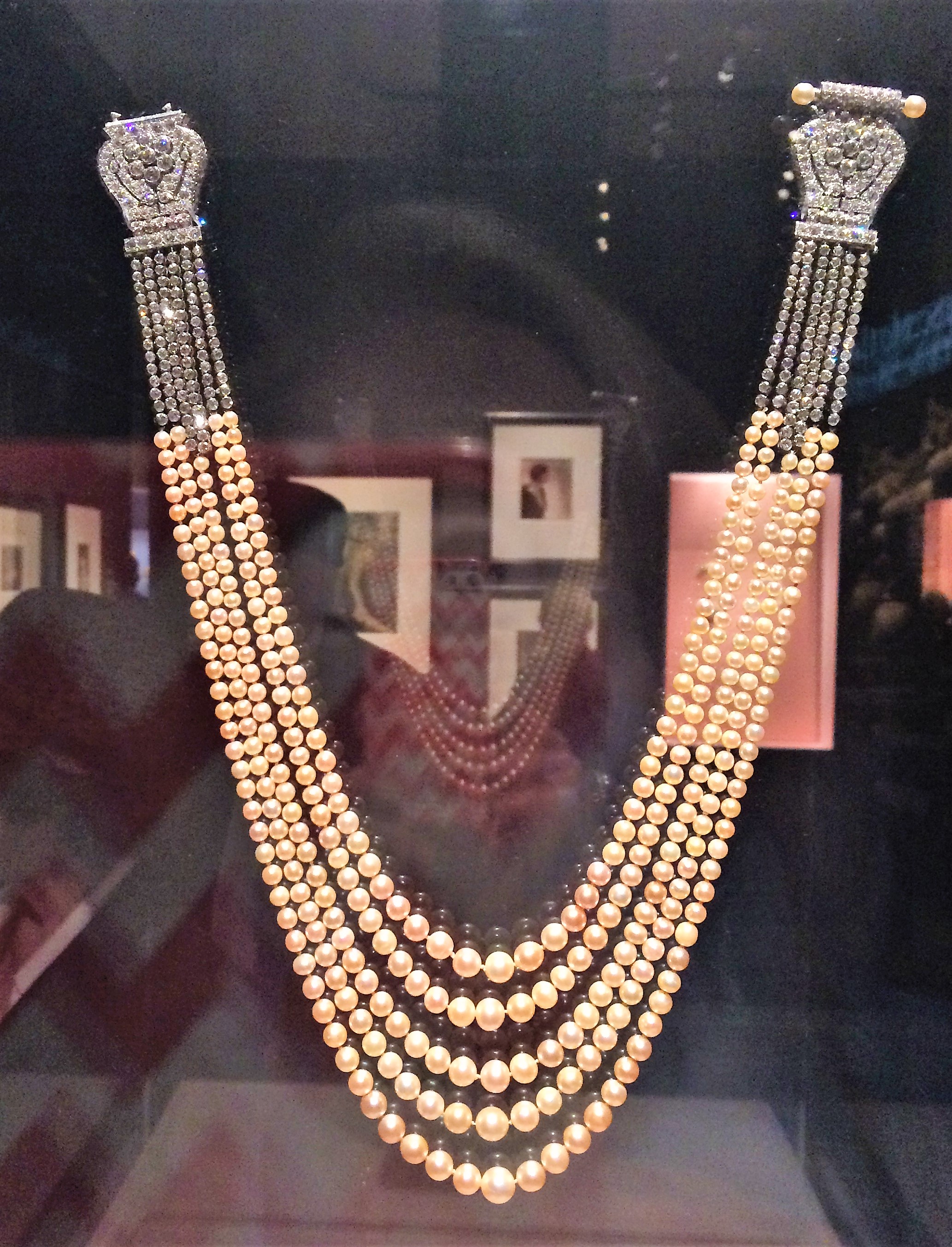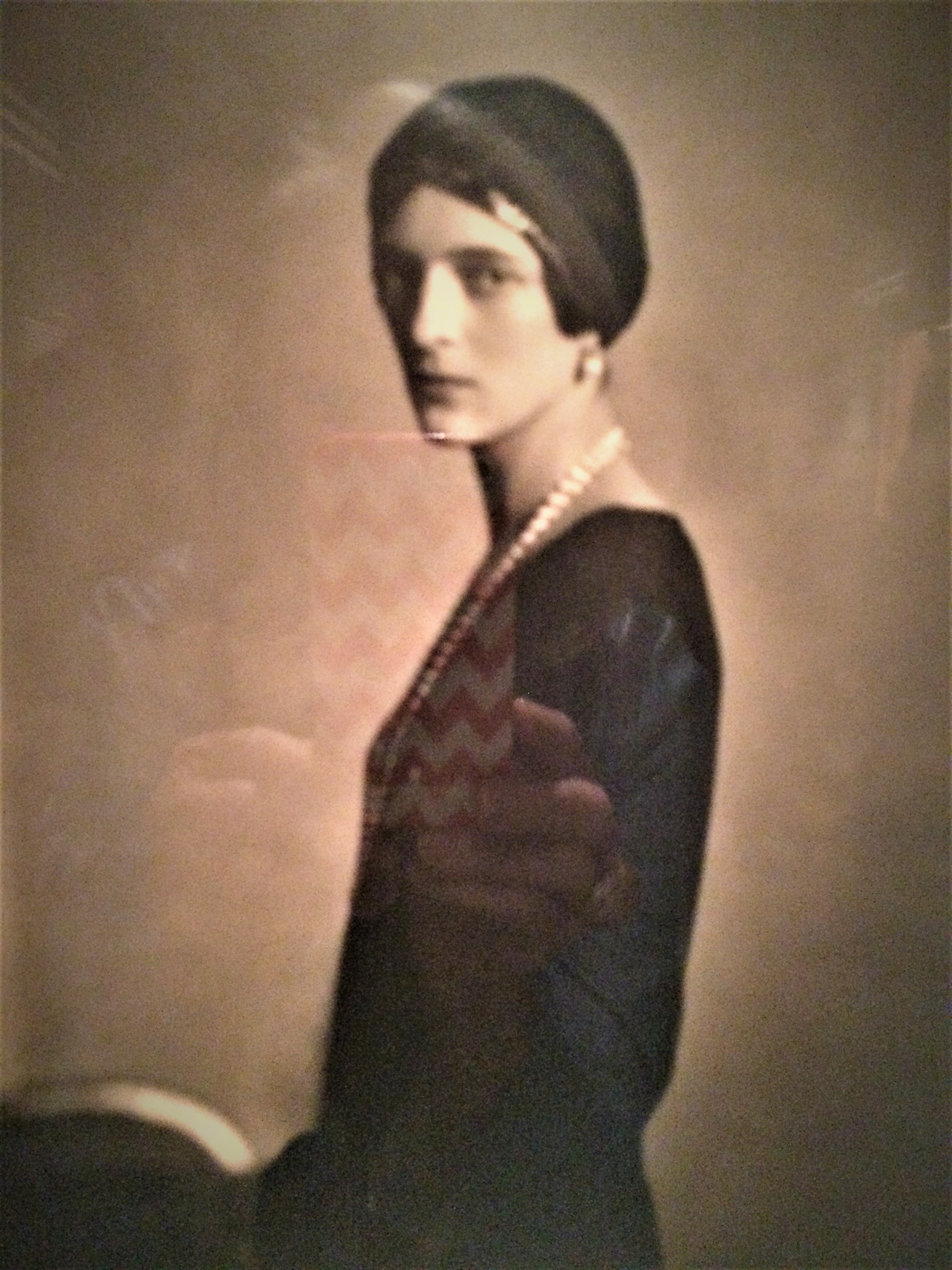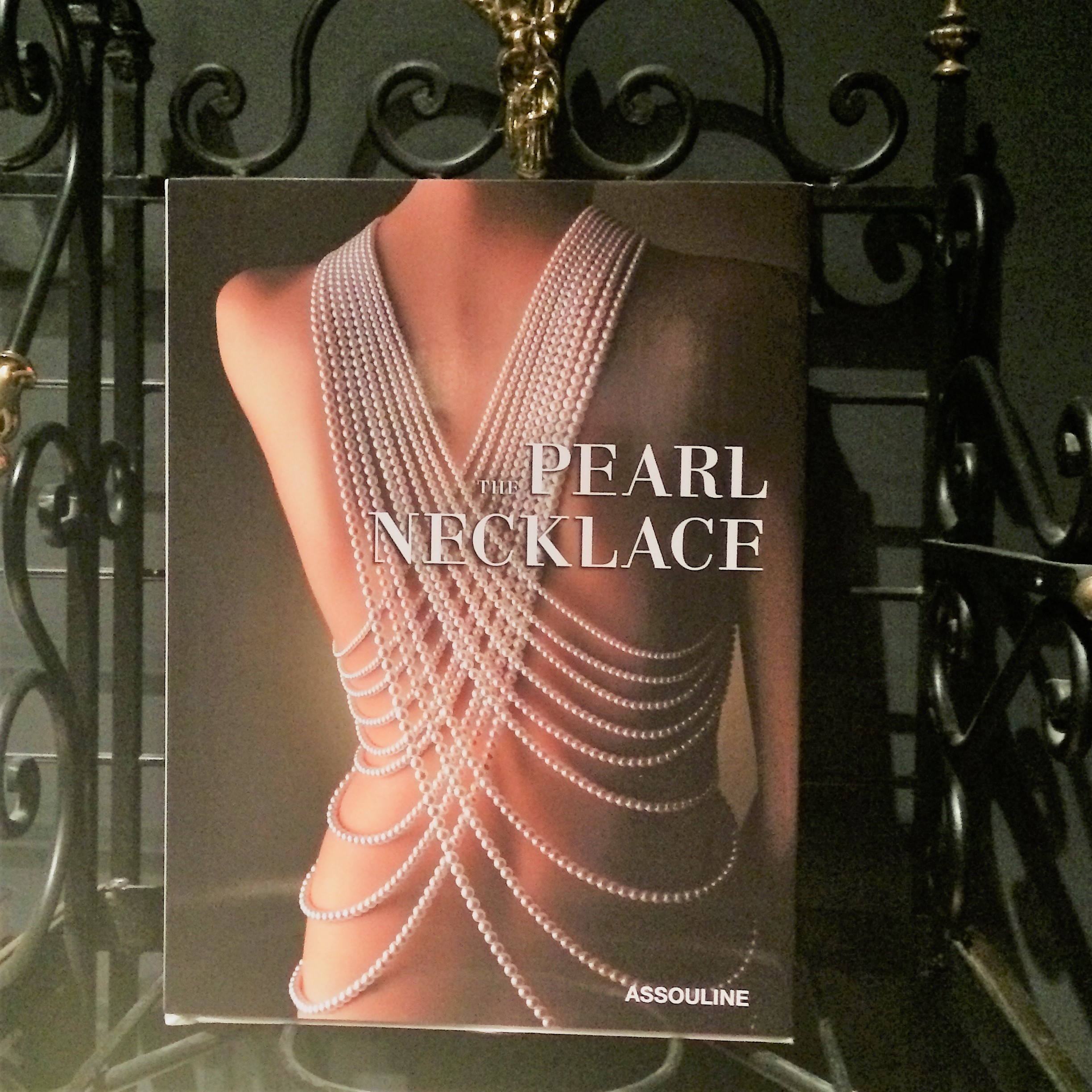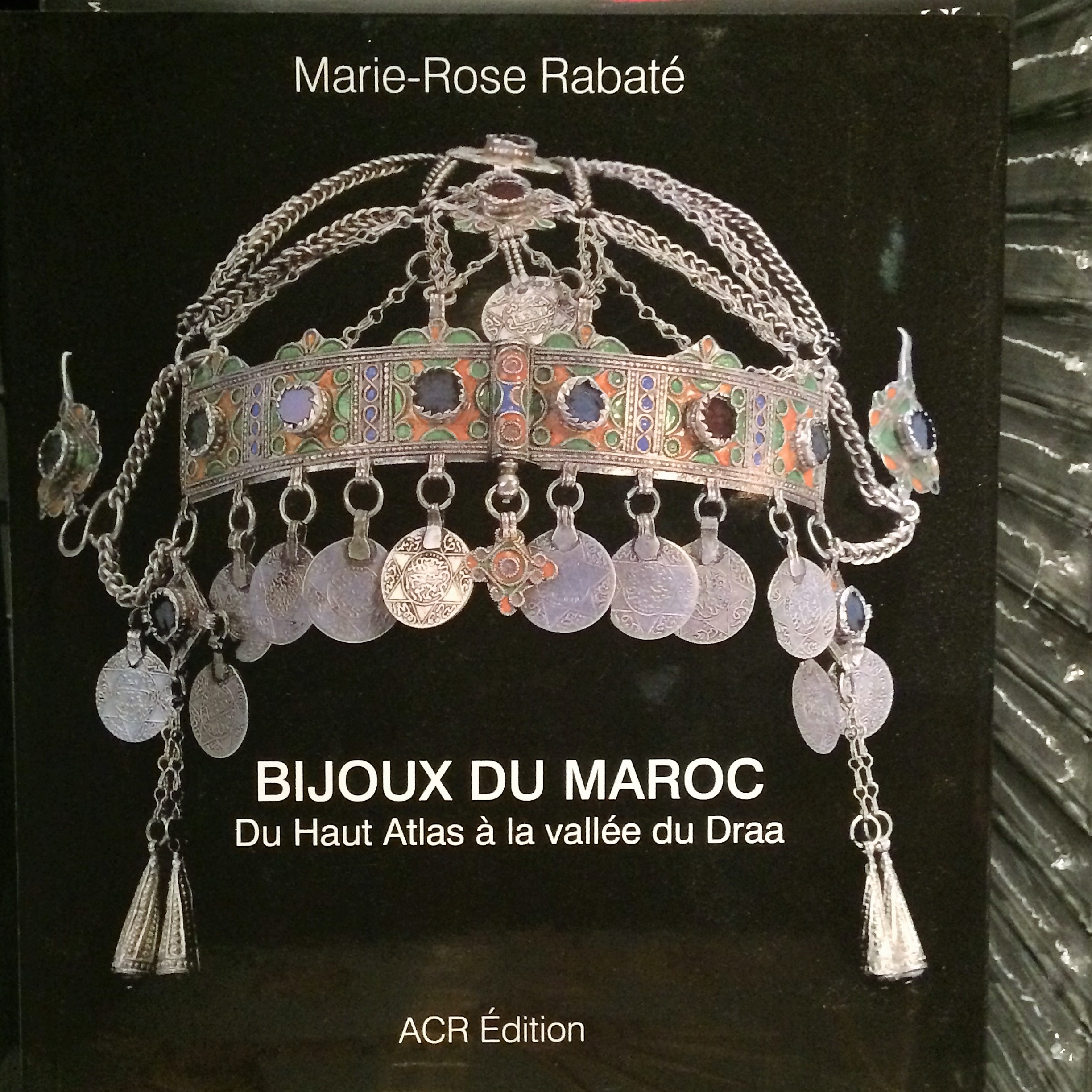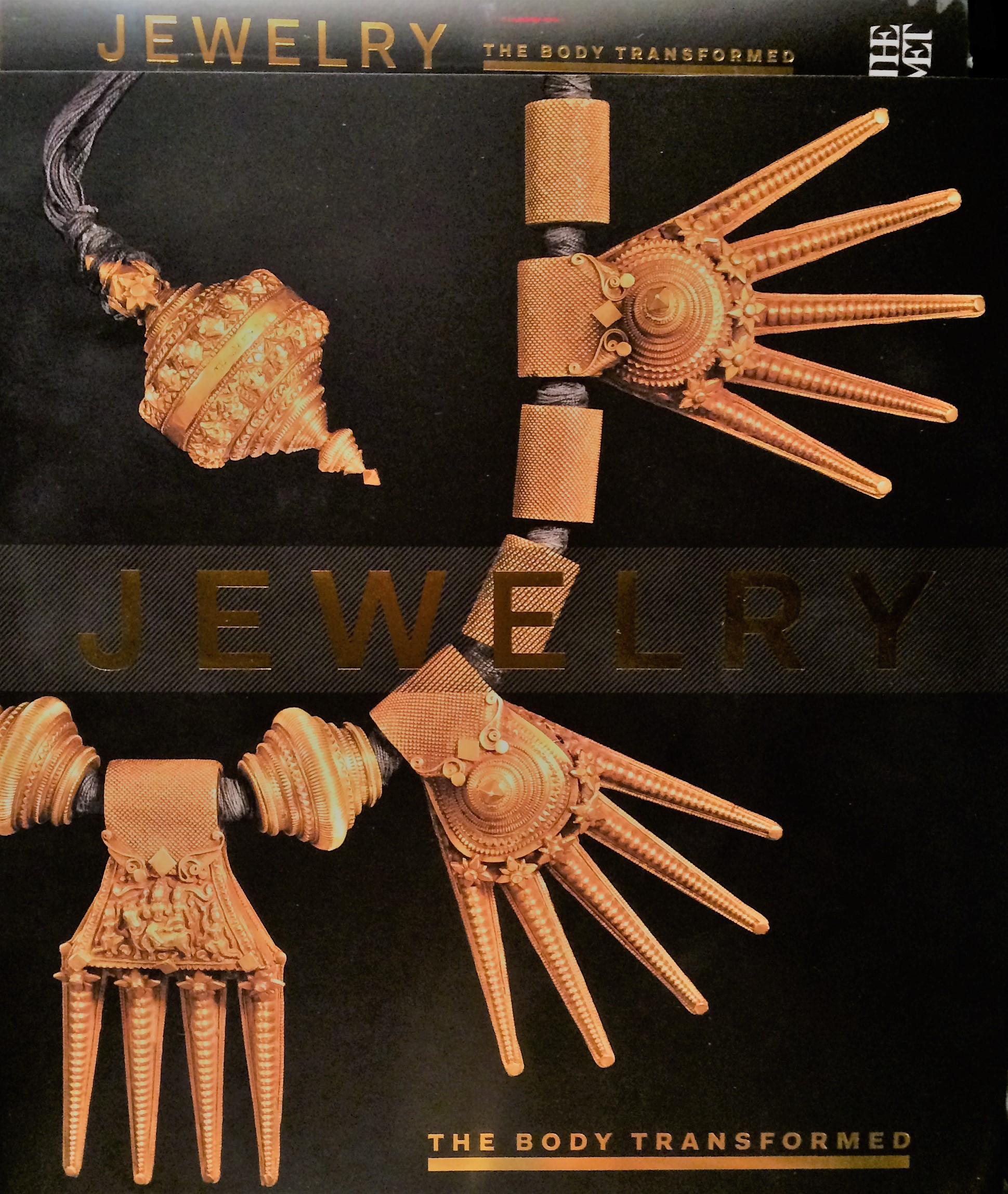Jewelry: The Body Transformed
Just in time for the gift-giving season, the most splendiferous gift of all arrived November 12th at the Metropolitan Museum of Art: Jewelry: The Body Transformed. So what’s it going to be? Alexander’s Golden Legacy consisting of arm bands with sea gods and a tritoness? Foot coverings fit for a queen from Thebes, circa 1479-1425 B.C.? Gold earrings with elephants and winged lions from 1st century B.C. India?
This week, rather than reinventing the word, I’ve taken the liberty of adopting a few thought-provoking questions from the Met’s brochure, highlighting a few favorites with the photos. On view through February 24, 2019, the installation seeks to answer some of the following:
What is jewelry?
Jewelry is the oldest art form known to man, predating the cave drawings by thousands of years. Jewelry: The Body Transformed crisscrosses time and space to explore how jewelry acts upon the body it adorns. It’s common knowledge that jewelry, from time immemorial, has been a symbol of power, status and identity. This installation brings together some 230 such objects drawn almost exclusively from The Met collection. It’s a dazzling array of headdresses and ear ornaments, necklaces and rings created between 2600 B.C.E. and the present day, shown alongside sculptures, paintings, and photographs that enhance the stories told by the jewelry.
What do we need to know?
The exhibition begins with a dramatic glorious installation—darkened galleries with free-standing cubicles housing precious objects meant to be worn—bathed in a seductive lighting. Here the emphasis is on the universality of jewelry. The overall effect is nothing short of sumptuous, with unique pieces from around the world displayed in groupings according to the part of the body they adorned: head and hair; nose, lips, and ears; neck and chest; arms and hands; and waist, ankles, and feet. The remaining galleries are organized thematically to encourage visitors to make cross-cultural comparisons. The Divine Body examine one of the earliest conceptions of jewelry—its link to immortality. Many rare pieces, including a head-to-toe ensemble in gold from ancient Egypt, were entombed with the elite for their journey into the afterlife.
Other rare gems featured are from Mesopotamia (present-day Iraq) and from the rulers of Calima (present-day Colombia), who were lavishly covered in sheets of gold. Perhaps to warm them in the hereafter.
How is the show organized?
The Regal Body shows the dialog between jewelry and rank, authority and status. The Transcendent Body explores jewelry’s power to appease the gods and invoke ancestors, the links to immortality. The Alluring Body explores the eroticism of pearls from the Victorian period to the present, and The Resplendent Body demonstrates the combination of technique and materials, with examples drawn from Cartier, Lalique, Tiffany and a number of contemporary jewelry designers.
The Seductive Pearl
Speaking of eroticism: After the turn-of-the-twentieth-century, multiple meanings were ascribed to the lustrous pearl, a symbol signifying a woman’s autonomy. Thanks in part to its championing by Josephine Baker, the Princess Yusupov of Russia, and Coco Chanel (left to right below), a silky strand of pearls came to signify a thoroughly modern liberated independent woman.
Yet, this comment from a museum placard: “How strange, then, that these pearly connotations of eroticism and modernity seem to have faded in the post-World War ll era.” Really? I adore my pearls, from the Tahitian blacks to the Mikimoto whites, and my granddaughter, who recently inherited a strand of lustrous seductive pearls, assures me she and her friends feel the same. The beat goes on.
Naturally, as the exhibition is at the Metropolitan Museum of Art, there are a goodly number of educational programs associated with Jewelry: The Body Transformed that will be on-going from December through February. Be sure to explore the Met’s website for more information. The exhibition dazzles, and visitors linger long in front of the gorgeous artifacts, their faces touched with awe. I’ll be going back for another visit shortly. Once is not enough. If you can’t get there to see the exhibit, perhaps you might like to treat yourself to a related book. In the gift shop, I found the following with the most beautiful covers.
To think that I saw it at The Metropolitan Museum of Art!
What I also found was a makeup counter tucked away at the rear of the first floor gift shop. It’s darling, see for yourself. Made me feel I was at Bloomingdale’s, awaiting the arrival of a makeup artist. Not a bad idea!
They lit the tree at Rockefeller Center this week, so it’s beginning to look a lot like Christmas. The same holds true for my building here in New York, where the holiday spirit is much in evidence, indoors and out. Next week is our annual house party, so I’ll send you a photo.
That’s all for this week Guys and Gals! Hope to see you back next week, when I’ll have the coffee ready. Now, don’t be bashful. Drop me a line and let me know which item would make your eyes glow brightly this holiday season. Until then…may life be good to you. A bientôt mes amis.

